For many of us, the Christmas season or New Year's Eve is associated with overindulging in delicious and rich food. Perhaps it's the food we eat every day, but in larger quantities, or perhaps it's the food we only eat on special occasions. In either case, overeating can have negative effects on our health. The good news is that you can still enjoy some of those delicious Christmas cookies or raclette on New Year's Eve without overeating and maintaining healthy blood sugar levels.
In this blog, we'll share five tips to help you avoid overeating (which can spike your blood sugar ) and the uncomfortable feeling of fullness, while still enjoying the holidays and all the delicious food.

1. Enjoy food in moderation
"Everything in moderation" is a concept we've all heard before, but what if it were more of a mindset than an action? Indeed, when we restrict and prohibit foods, we tend to crave them even more. [1] In the short term, restricting food can lead to excessive cravings, because more often than not, we end up breaking our own food rules and eating the foods we crave. But when we do that, we eat like it's the Last Supper, believing we'll never "get" to eat that food again (most of us have experienced this).
However, when we allow ourselves to eat all kinds of foods in moderation (yes, that includes cookies and fondue), our cravings for those foods are more neutral (i.e., our cravings for them are more moderate).
Imagine if we approached this time and the temptation to overeat with these questions: "I can eat more of this later, but do I want it?" If so, then ask yourself: "I can eat more of this later, so do I have to eat it all now?"

2. Keep your blood sugar in balance
Keeping blood sugar levels stable can be key to avoiding overeating. Thanks to continuous blood glucose monitoring with CGM sensors, we can now collect real-time data on how food and exercise affect our blood sugar levels. This means blood sugar control is no longer a matter of chance.
Both blood sugar spikes and lows can lead to feelings of hunger, cravings [2], and fatigue [3]—often leading us to reach for foods high in sugar and carbohydrates to get the quick energy boost our body thinks it needs. But what if we learned a different way?
Stabilizing our blood sugar levels can help reduce cravings for overeating and feelings of fullness after eating, thus balancing these blood sugar highs and lows. [4] Managing our blood sugar levels is not just about avoiding certain foods, but also about the timing, quantity, and quality of food, as well as our exercise routine. Eating a protein-rich meal [5] before a hot chocolate or taking a brisk walk [6] after a meal can help keep blood sugar levels in a healthy range.
Testing with a continuous blood glucose monitor and the Hello Inside app allows you to experience the cause and effect of these examples firsthand.
3. Avoid excessive hunger
We know it's tempting to skip a meal so we can indulge later in the day, but this can often lead to overeating. When we go without food for an extended period, our blood sugar levels drop, and this sustained drop isn't good. It can also lead to irritability, mood swings, and a general lack of patience. This is also known as "hangry."
Skipping meals can lead to an increase in plasma ghrelin levels [7]. This hormone is called the hunger hormone because its main function is to increase appetite, and it can lead to a larger portion at the next meal. Skipping meals and the resulting drop in blood sugar levels increase cravings for food, especially carbohydrate-containing foods [8].

Instead, avoid skipping meals and eat balanced meals regularly throughout the day. Focus on filling your plate with a variety of colorful vegetables, whole grains, and protein. Eat enough to feel comfortably full, and remember that you can always eat more later. You don't have to earn your food by skipping meals.
4. Eat mindfully
When we eat mindfully and consciously, we are more satisfied and less likely to overeat. [9] If we eat a meal quickly while distracted and watching television, our food is metabolized differently than if we take our time and eat without distraction.
To eat mindfully, you should focus on these five points:
- How does the food taste and smell?
- Take your time, enjoy your meal and eat slowly
- Try to put your knife and fork away between bites to avoid eating too quickly
- Avoid any distractions (yes, turn off all screens)
- Enjoy the company of the people who eat with you
- Notice when you start to feel comfortably full (around a 6 on the hunger-satiety scale)
The more you tune into eating, the more you'll enjoy it. This way, you're more likely to stop when you're full (and not eat mindlessly), helping you avoid overeating or feeling uncomfortably full.

5. Pay attention to your hunger and satiety
Our bodies are wonderful at telling us when it's hungry and full. For various reasons, however, some of us have become attuned to these signals and forgotten how to listen to them. The Christmas season is a good opportunity to relearn these signals. You can start today by paying attention to them and describing them:
- How does your body feel when it is full?
- How does your body feel when it is hungry?
Don't worry if you don't recognize these signals right away. It may take time and practice. Trust your body and listen to it carefully. You'll find that it's been communicating with you all along. If you recognize when you're full, you'll be less likely to overeat during the holiday season (and in the coming year).
Continuous blood glucose monitoring and visualizing your data in the Hello Inside app can help you better understand and get to know your body's signals.
Enjoy the holidays!
______________________________________________________________________
[1] Meule A, Lutz A, Voegele C, Kübler A. Food cravings discriminate differentially between successful and unsuccessful dieters and non-dieters. Validation of the Food Cravings Questionnaires in German. Appetites. 2012;58(1):88-97. doi:10.1016/j.appet.2011.09.010
[2] Wyatt P, Berry SE, Finlayson G, et al. Postprandial glycaemic dips predict appetite and energy intake in healthy individuals [published correction appears in Nat Metab. 2021 Jul;3(7):1032]. Nat Metab. 2021;3(4):523-529. doi:10.1038/s42255-021-00383-x
[3] Fritschi C, Quinn L. Fatigue in patients with diabetes: a review. J Psychosom Res. 2010;69(1):33-41. doi:10.1016/j.jpsychores.2010.01.021
[4] Melanson KJ, Westerterp-Plantenga MS, Campfield LA, Saris WH. Blood glucose and meal patterns in time-blind males, after aspartame, carbohydrate, and fat consumption, in relation to sweetness perception. Br J Nutr. 1999;82(6):437-446.
[5] Sun L, Goh HJ, Govindharajulu P, Leow MK, Henry CJ. Postprandial glucose, insulin and incretin responses differ by test meal macronutrient ingestion sequence (PATTERN study). Clin Nutr. 2020;39(3):950-957. doi:10.1016/j.clnu.2019.04.001
[6] Chacko E. Exercising Tactically for Taming Postmeal Glucose Surges. Scientifica (Cairo). 2016;2016:4045717. doi:10.1155/2016/4045717
[7] Belinova L, Kahleova H, Malinska H, et al. The effect of meal frequency in a reduced-energy regimen on the gastrointestinal and appetite hormones in patients with type 2 diabetes: A randomized crossover study. PLoS One. 2017;12(4):e0174820. Published 2017 Apr 3. doi:10.1371/journal.pone.0174820
[8] Strachan MW, Ewing FM, Frier BM, Harper A, Deary IJ. Food cravings during acute hypoglycaemia in adults with type 1 diabetes. Physiol behavior 2004;80(5):675-682. doi:10.1016/j.physbeh.2003.12.003
[9] Katterman SN, Kleinman BM, Hood MM, Nackers LM, Corsica JA. Mindfulness meditation as an intervention for binge eating, emotional eating, and weight loss: a systematic review. Eat Behavior 2014;15(2):197-204. doi:10.1016/j.eatbeh.2014.01.005





